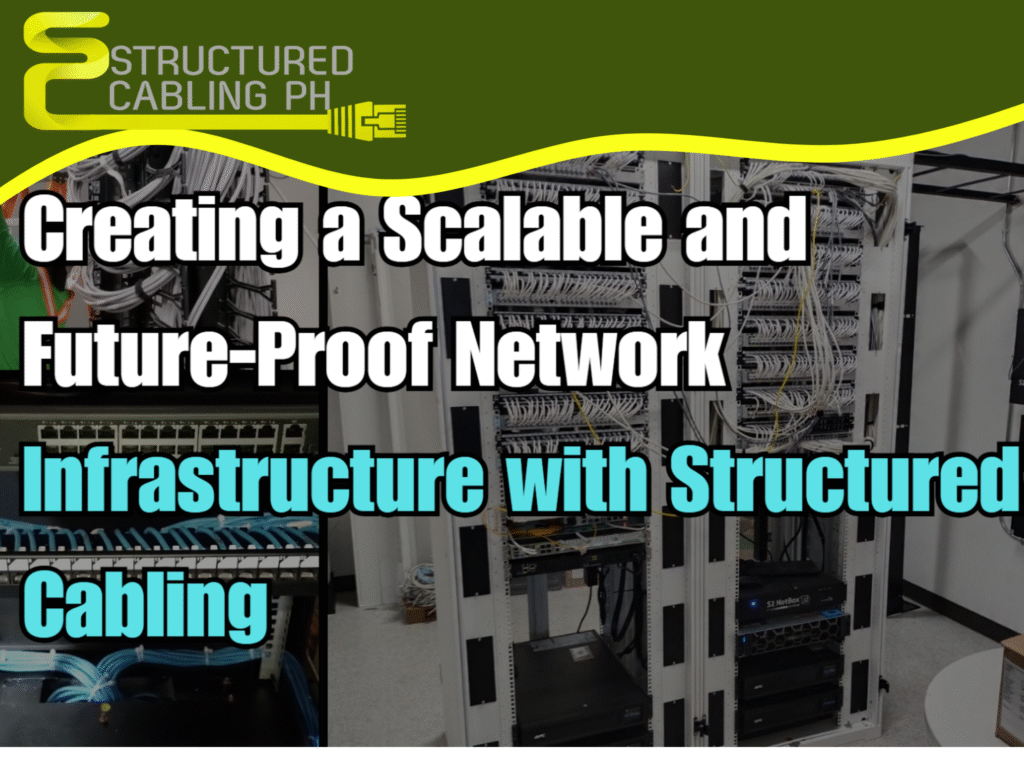In today’s fast-paced, tech-driven world, a reliable, scalable, and future-proof network infrastructure is essential for businesses of all sizes. Whether you’re a startup expanding rapidly, a mid-sized company investing in new technologies, or an established enterprise looking to stay ahead, your network must be able to grow and adapt as your needs change. One key element that plays a vital role in this adaptability is
structured cabling.
But what exactly is structured cabling, and why should you care about it when building your network? Let’s break it down and see how structured cabling can help create a robust network infrastructure that supports growth now and into the future.
What Is Structured Cabling?
Structured cabling is essentially the organized system of cables and hardware used to support a company’s telecommunications and
networking infrastructure. Unlike traditional, often chaotic, cabling methods, structured cabling follows a standardized design. It includes everything from the cables themselves (whether fiber optic, copper, or hybrid) to patch panels, outlets, and conduits—all carefully planned to ensure a clean, efficient setup.
This approach isn’t just for now; it’s built to be scalable and easily adaptable to support new technologies down the road.
Why Structured Cabling Is Essential for a Scalable Network
As your business evolves, so do your network requirements. Whether you’re hiring more employees, integrating new software, or bringing in advanced technologies, your network needs to be flexible enough to grow with you. Here’s why structured cabling is a game-changer when it comes to creating a scalable network:
1. Seamless Expansions and Upgrades
As your company grows, it’s only natural that you’ll need to add more devices, equipment, or even office space. A structured cabling system makes adding or expanding your network a lot simpler and less disruptive. You can easily extend connections, add new ports, and even change configurations without major disruptions to your business operations.
2. Ready for Future Technologies
One of the biggest benefits of structured cabling is how well it supports future advancements. Whether you’re looking to integrate
faster broadband speeds, higher-quality video conferencing, or even smart devices and IoT solutions, structured cabling allows you to upgrade without completely overhauling your infrastructure. It’s designed to be compatible with new technologies as they emerge, meaning your network can grow and evolve without limitations.
3. Simplified Maintenance and Troubleshooting
When your cabling is well-organized and properly labeled, identifying and fixing issues becomes much easier. You won’t have to dig through a mess of wires to find the root cause of a problem. Clear labeling and routing ensure that your team can quickly isolate and resolve issues, reducing downtime and keeping your network running smoothly.
4. Cost-Effectiveness Over Time
Although structured cabling might require a larger upfront investment, the long-term savings are significant. With a well-designed, standardized system in place, you’ll reduce the costs of future maintenance, troubleshooting, and even cabling upgrades. Plus, because the system is scalable, you won’t need to replace it every few years, saving both time and money in the long run.
What to Consider When Planning Your Structured Cabling
When planning your network infrastructure, there are a few things to keep in mind to ensure that your structured cabling system is truly future-proof.
1. Know Your Needs—Now and in the Future
It’s important to understand your current network needs, but also think about where your business is headed. Consider how many users, devices, and applications you’ll need to support in the next few years. This foresight helps you design a network that can grow with you without requiring a complete overhaul every time you hit a milestone.
2. Invest in Quality Materials
The quality of your cables, connectors, and hardware can make all the difference. Choosing the right materials ensures your network can handle increased speeds and bandwidth demands down the line. Opting for
high-quality copper or fiber-optic cabling can provide faster speeds and greater reliability, which will become increasingly important as your network scales.
3. Follow Industry Standards
Following
structured cabling standards ensures compatibility and reliability. When your infrastructure is built to adhere to global standards, your system will be organized, easier to maintain, and more adaptable to upgrades. Working with professionals who understand these standards ensures your system is both effective and future-ready.
4. Cable Management is Crucial
Cable management might not be the first thing you think about when building your network, but it can make a huge difference in maintaining an organized system. Using proper cable trays, racks, and labeling makes your infrastructure easier to navigate and maintain. It also ensures that, as your network grows, it remains accessible and clean.
Conclusion: Building a Future-Ready Network with Structured Cabling
Creating a scalable, future-proof network infrastructure doesn’t have to be complicated or expensive. Structured cabling provides a strong foundation for any growing organization, allowing you to adapt to new technologies and expansion needs without constant rewiring. By investing in a well-organized, standardized cabling system, you’re not just building a network for today—you’re preparing for whatever comes next.
At
VastResult, we understand how essential a reliable network is for your business’s success. Whether you’re setting up a new office or upgrading an existing network, structured cabling is the key to ensuring that your infrastructure can support growth today and in the years to come.
Ready to build a network that grows with you? Contact
VastResult today to get started on creating a scalable, efficient, and future-proof network that will help your business thrive for the long haul.


